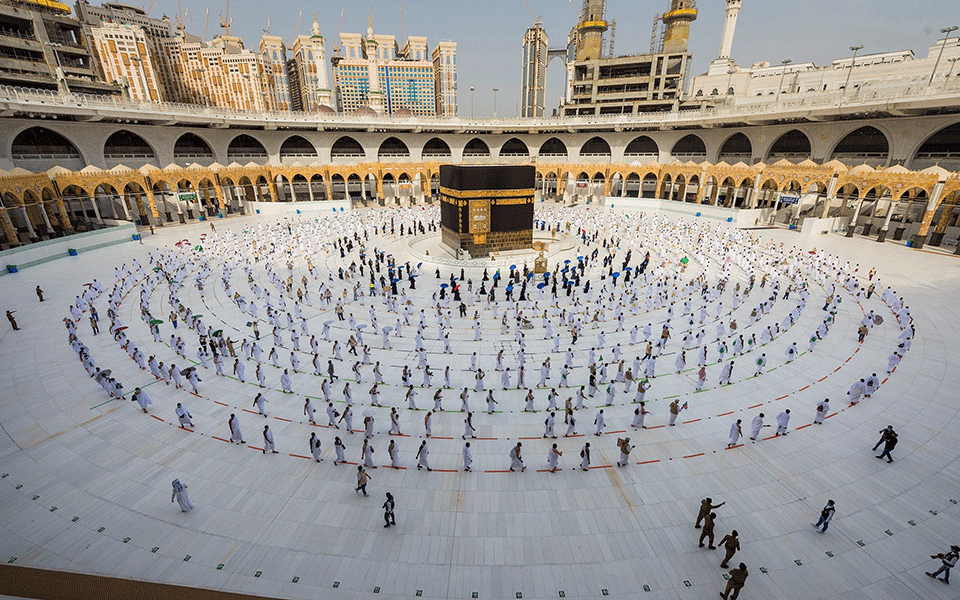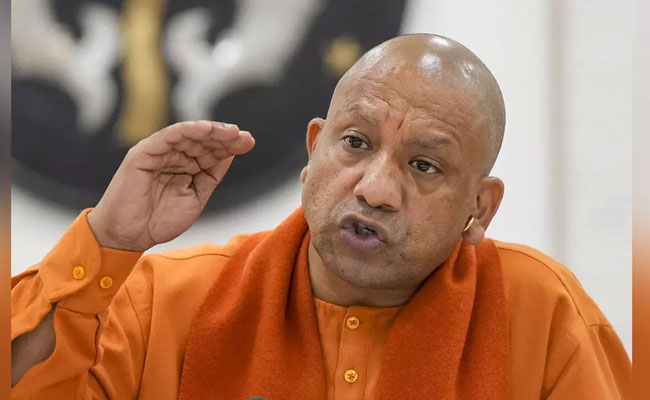Riyadh: A very small, limited number of people donning the white terrycloth garment symbolic of the Muslim pilgrimage circled Islam's holiest site in Makkah on Sunday after Saudi Arabia lifted coronavirus restrictions that had been in place for months.
The kingdom had taken the rare step of suspending the smaller "umrah" pilgrimage that draws millions year-round from across the world in early March as the coronavirus morphed into a global pandemic and prompted countries to impose lockdowns and curfews to slow down transmission.
But as nations begin to ease those restrictions, the Saudi government on Sunday started allowing a maximum of 6,000 pilgrims a day to enter the sprawling Grand Mosque in Makkah.
Only Saudi citizens and residents will be permitted to enter the mosque during this first phase of reopening, and each person has up to three hours to complete the pilgrimage.
Before visitors can enter the mosque to pray or perform the umrah, they have to apply and reserve a specific time and date through an online application to avoid crowding and maintain social distancing. Visitors can also select via the app their means of transportation and meeting points.
State TV showed on Sunday what appeared to be fewer than 50 people circling the Kaaba at the same time and walking several metres (feet) apart. Typically, the mosque would be packed with worshippers from around the world crowded shoulder-to-shoulder at all times of the day and night.
The second phase for loosening restrictions at the Grand Mosque comes into effect on October 18, allowing a maximum of 15,000 pilgrims and 40,000 for prayer from among residents and citizens based on allocated times via the app.
Muslim travellers from outside Saudi Arabia could be allowed to perform the umrah pilgrimage as early as November 1, the Interior Ministry has said. Saudi Arabia recently began easing some restrictions on international flights for the first time since March.
The kingdom held a dramatically downsized, symbolic hajj pilgrimage in July due to concerns that it could easily have become a global super-spreader event for the virus. Pilgrims were selected after applying through an online portal and all were residents or citizens of Saudi Arabia.
Rather than the more than two million pilgrims the kingdom hosts for the annual event, as little as 1,000 took part after being tested for the virus and quarantined.
Despite taking early and sweeping measures to contain the virus, Saudi Arabia has recorded nearly 336,000 cases, including 4,850 deaths.
Let the Truth be known. If you read VB and like VB, please be a VB Supporter and Help us deliver the Truth to one and all.
Mumbai (PTI): Thousands of followers of Dr Babasaheb Ambedkar converged at his memorial in Mumbai's Dadar area on Saturday to pay tributes to the social reformer on his death anniversary, observed as 'Mahaparinirvan Din'.
Maharashtra Governor Acharya Devvrat, Chief Minister Devendra Fadnavis, Deputy Chief Minister Eknath Shinde and Shiv Sena (UBT) leader Uddhav Thackeray were among those who paid tributes to Ambedkar at 'Chaityabhoomi' in Shivaji Park.
The Governor said Ambedkar gave the country a Constitution which ensured equal rights to all people.
Speaking at a tribute event organised at 'Chaityabhoomi' on the occasion of the 69th Mahaparinirvan Din of Dr Ambedkar, Devvrat said great personalities strengthen movements of social justice and live forever through their thoughts and work.
"Despite adversities, Babasaheb believed education to be the most powerful weapon to change the future of a family, society and a country. The Constitution united people from different communities and ensured equal rights to all," he said.
Chief Minister Devendra Fadnavis said Ambedkar laid the foundation for the nation's progress and due to his far-sighted vision, India has emerged as the world's fourth largest economy and is poised to reach the third rank soon.
Fadnavis underlined Ambedkar's role in India's energy security, stating that the adoption of a national power grid concept enabled the country's path toward energy self-reliance.
"The Constitution ensured a strong democratic base and safeguarded the rights of common citizens," he said, adding the state government is committed to completing developmental works at the 'Chaityabhoomi' memorial.
Deputy Chief Minister Eknath Shinde said Ambedkar's struggle was for establishing equality, liberty, justice and fraternity.
"The guiding principle of "Educate, Organise and Agitate" continues to inspire social transformation," he said.
The Governor, Chief Minister and Deputy Chief Minister, along with several ministers, MPs, MLAs and dignitaries, paid floral tributes at the memorial. Dignitaries also visited a photo exhibition organised by the BMC.
A helicopter showered flower petals over 'Chaityabhoomi' and copies of the Constitution were presented to the attendees.
Every year, thousands of people from across the state converge at 'Chaityabhoomi' on December 6. Ambedkar died on this day in 1956.
The Brihanmumbai Municipal Corporation (BMC) has set up temporary sheds, mobile toilets, drinking water and medical stalls at the Shivaji Park, in view of the huge rush of Ambedkar's followers.
In a post on X, Prime Minister Narendra Modi recalled Ambedkar’s ‘visionary’ leadership.
“Remembering Dr. Babasaheb Ambedkar on Mahaparinirvan Diwas. His visionary leadership and unwavering commitment to justice, equality and constitutionalism continue to guide our national journey. He inspired generations to uphold human dignity and strengthen democratic values.
“May his ideals keep lighting our path as we work towards building a Viksit Bharat,” Modi said in his message.





